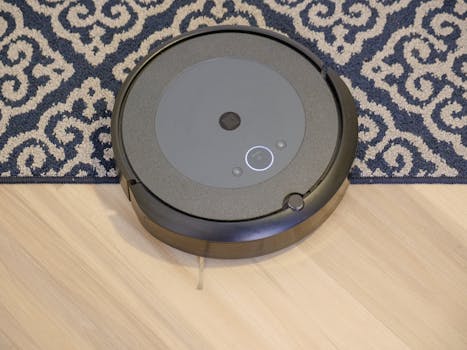
Smart Homes and Smart Living: The Technological Transformation of European Homes by 2025
Smart Homes and Smart Living: The Technological Transformation of European Homes by 2025 is revolutionizing the way we live, work, and interact with our living spaces. The integration of advanced technologies such as artificial intelligence, Internet of Things (IoT), and data analytics is transforming European homes into smart, efficient, and sustainable habitats.
Introduction to Smart Homes
A smart home is a dwelling that incorporates advanced technologies to provide a high level of convenience, efficiency, and comfort for its occupants. Smart homes are equipped with sensors, actuators, and controllers that enable remote monitoring and control of various systems, including lighting, heating, cooling, security, and entertainment.
Key Features of Smart Homes
- Energy efficiency: Smart homes optimize energy consumption by learning occupants’ schedules and preferences, and adjusting lighting, heating, and cooling systems accordingly.
- Home automation: Smart homes enable remote control of various systems, including lighting, security, and entertainment, through smartphones or voice assistants.
- Health and wellness: Smart homes incorporate sensors and devices that monitor and promote occupants’ health and wellness, such as air quality sensors and fitness trackers.
- Safety and security: Smart homes feature advanced security systems, including motion detectors, video cameras, and alarm systems, to protect occupants and their property.
Technological Advancements Driving Smart Homes
The development of smart homes is driven by several technological advancements, including:
- Internet of Things (IoT): The increasing proliferation of IoT devices, such as sensors and actuators, is enabling the creation of smart homes.
- Artificial intelligence (AI): AI is being applied to smart homes to analyze data, learn occupants’ behaviors, and optimize system performance.
- Data analytics: The analysis of data from various sources, including sensors and user feedback, is helping to improve the efficiency and effectiveness of smart homes.
- 5G networks: The deployment of 5G networks is providing the high-speed, low-latency connectivity required for smart homes to function seamlessly.
Benefits of Smart Homes
The benefits of smart homes are numerous, including:
- Increased convenience: Smart homes enable occupants to control various systems remotely, using smartphones or voice assistants.
- Improved energy efficiency: Smart homes optimize energy consumption, reducing waste and saving occupants money.
- Enhanced safety and security: Smart homes feature advanced security systems, protecting occupants and their property.
- Better health and wellness: Smart homes promote occupants’ health and wellness, through features such as air quality monitoring and fitness tracking.
Challenges and Limitations
While smart homes offer many benefits, there are also challenges and limitations to consider, including:
- High upfront costs: The installation of smart home systems can be expensive, making them inaccessible to many people.
- Complexity: Smart homes can be complex to set up and use, requiring significant technical expertise.
- Security risks: Smart homes are vulnerable to cyber threats, which can compromise occupants’ safety and security.
- Dependence on technology: Smart homes rely on technology to function, which can be unreliable and prone to failures.
Conclusion
Smart homes and smart living are transforming the European home, offering unprecedented levels of convenience, efficiency, and sustainability. While there are challenges and limitations to consider, the benefits of smart homes far outweigh the drawbacks. As technology continues to evolve, we can expect smart homes to become even more sophisticated, integrated, and accessible, revolutionizing the way we live, work, and interact with our living spaces.
Future of Smart Homes
By 2025, smart homes will become the norm in Europe, with over 50% of households adopting smart home technologies. The future of smart homes will be shaped by emerging technologies such as:
- Artificial intelligence (AI): AI will play a more significant role in smart homes, enabling predictive maintenance, energy optimization, and personalized services.
- Internet of Things (IoT): The proliferation of IoT devices will continue, enabling the creation of more sophisticated smart home systems.
- 5G networks: The deployment of 5G networks will provide the high-speed, low-latency connectivity required for smart homes to function seamlessly.
- Blockchain: Blockchain technology will be applied to smart homes to enhance security, transparency, and data management.
Smart Living
Smart living refers to the integration of technology, sustainability, and well-being into daily life. Smart living encompasses a range of aspects, including:
- Sustainable living: Smart living promotes sustainable practices, such as energy efficiency, waste reduction, and eco-friendly consumption.
- Health and wellness: Smart living prioritizes health and wellness, through features such as fitness tracking, nutrition planning, and stress management.
- Personal development: Smart living enables individuals to set and achieve personal goals, through features such as learning platforms, productivity tools, and mindset coaching.
- Community engagement: Smart living fosters community engagement, through features such as social networks, volunteer opportunities, and local events.
Conclusion
Smart homes and smart living are revolutionizing the way we live, work, and interact with our living spaces. By 2025, smart homes will become the norm in Europe, offering unprecedented levels of convenience, efficiency, and sustainability. As technology continues to evolve, we can expect smart homes to become even more sophisticated, integrated, and accessible, enabling individuals to live healthier, happier, and more fulfilling lives.






